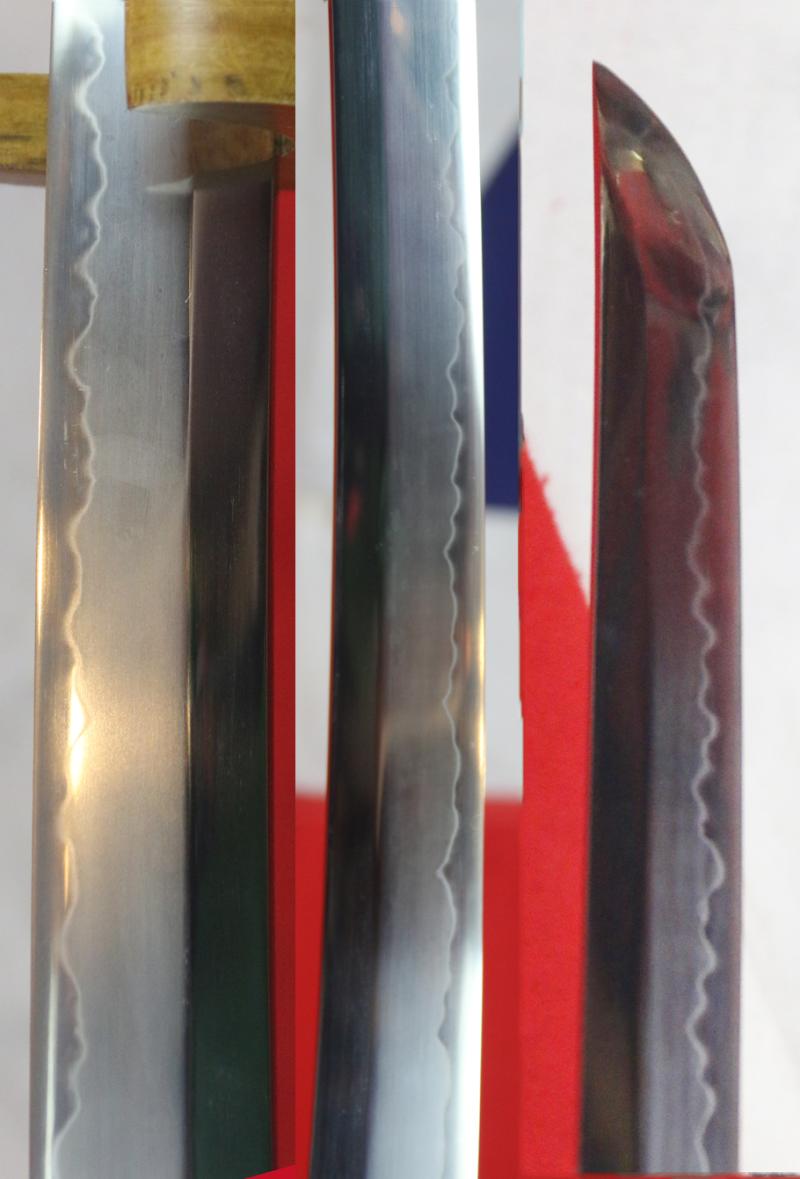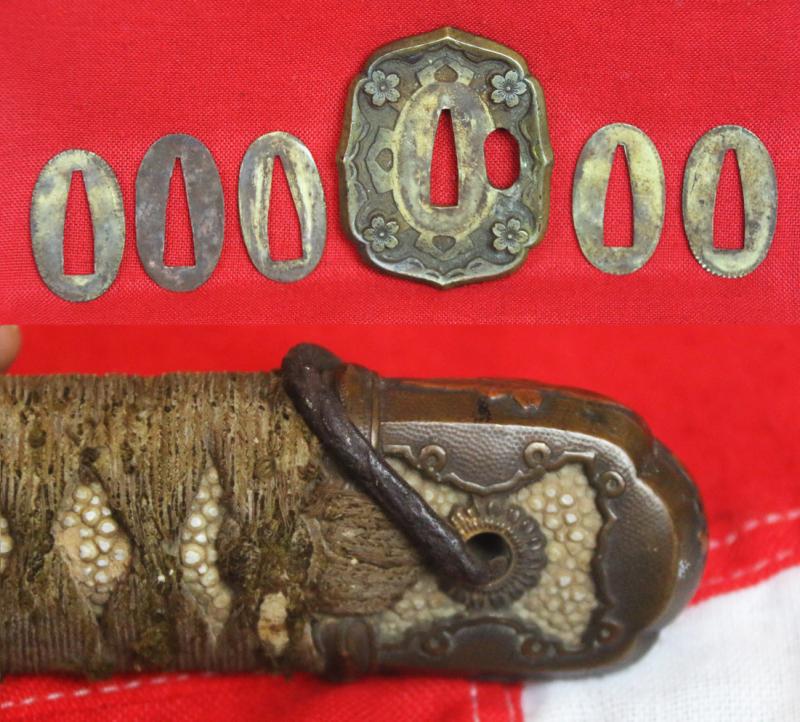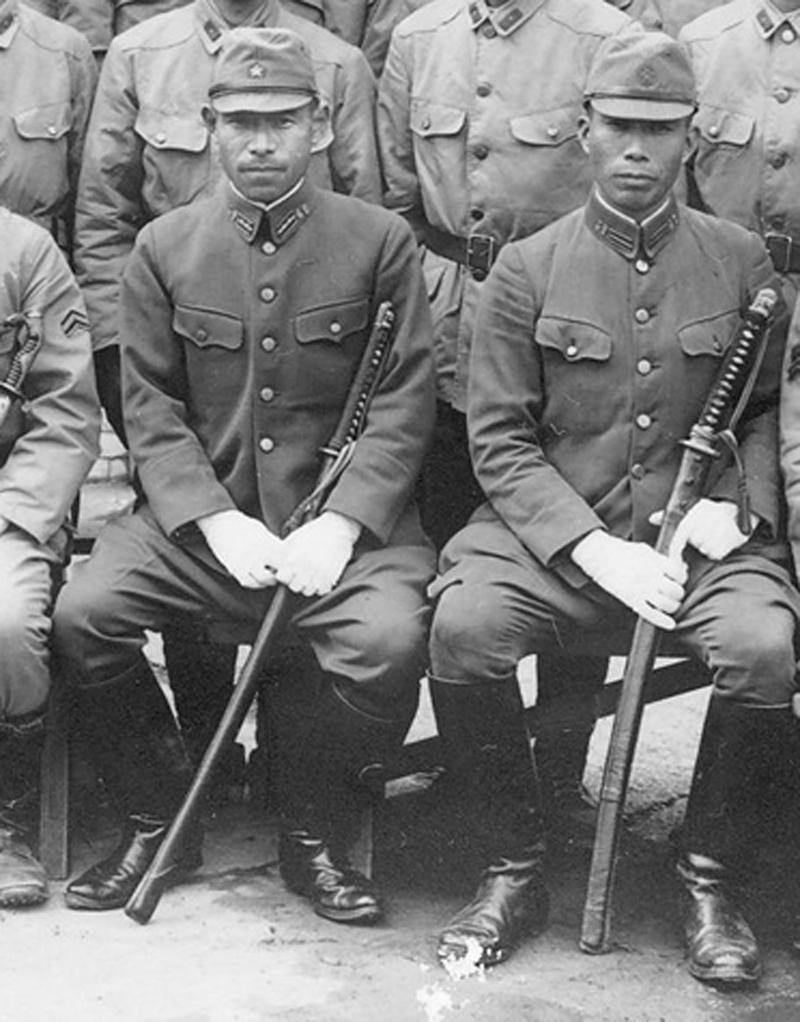A Superb Signed ShinGunto WW2 Japanese Officer's Katana By Kanenaga {Amaike Kanenaga is Likely} In Type 98 Military Mounts
The blade is shinogi-zukuri in superb polish showing a beautiful notare hamon, torii-zori. Koshirae (mounting) is a wooden saya with leather protective cover and suspension ring; traditional WW2 tsuka (handle) wrapped in brown silk over white samegawa (ray skin), standard brass military fuchi (collar) and kabutogane (hilt pommel), tsuba and other fittings with sakura (cherry blossom) and kiku (chrysanthemums).
A WW2 tradfitional officers sword used in the Japanese Islands and surrendered in 1945. Japan launched a surprise attack on the United States Pacific fleet at Pearl Harbor, Hawaii, on December 7, 1941. The attack severely damaged the American fleet and prevented, at least for the short term, serious American interference with Japanese military operations. In response, the United States declared war on Japan. Following Germany's declaration of war on the United States, the United States also declared war on Germany.
After the attack on Pearl Harbor, Japan achieved a long series of military successes. In December 1941, Guam and Wake Island fell to the Japanese, followed in the first half of 1942 by the Philippines, the Dutch East Indies, Hong Kong, Malaya, Singapore, and Burma. Thailand remained officially neutral. Only in mid-1942 were Australian and New Zealander forces in New Guinea and British forces in India able to halt the Japanese advance.
The turning point in the Pacific war came with the American naval victory in the Battle of Midway in June 1942. The Japanese fleet sustained heavy losses and was turned back. In August 1942, American forces attacked the Japanese in the Solomon Islands, forcing a costly withdrawal of Japanese forces from the island of Guadalcanal in February 1943. Allied forces slowly gained naval and air supremacy in the Pacific, and moved methodically from island to island, conquering them and often sustaining significant casualties. The Japanese, however, successfully defended their positions on the Chinese mainland until 1945.
Addendum; The blade is jolly sharp still, and pretty much blemish free, bar one tiny area of rust spotting at the bridge of the mune, on the omote, half way up the blade, about 4mm x 3mm. We show it in the long photo, 1 on the site, just past the wood stand support, but no close up though.
Code: 25270










